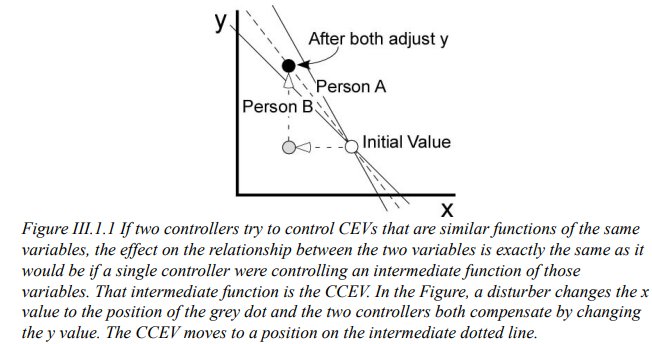Not everyone is interested in exploring the limitations and possibilities of control theory. This is a basis, I think, of the long-running disagreements between Rick and Martin, exemplified by a failure to come to mutual terms beginning with post #4 of the Autonomy and evolution topic. As I understand them,
- Rick’s interest is in experimental work, especially that form of experiment done by building and testing generative PCT models of observed behavior, building on work that he did with Bill.
- Martin’s interest is in the mathematical and biological foundations of the theory, PCT, and the consequent constraints and possibilities of what control systems are capable of, individually and collectively—“more about PCT than Bill put in his writings”—and “to suggest a variety of lines of research in different domains in which PCT could be a fundamental premise” (PPC I:19).
This is not to say that Rick is disinterested in theory, but for his practice testing the canonical formulation is quite enough. And of course Martin has deep experience in designing and conducting PCT psychological experiments, but he has his hands full with the work that engages him now. We each devote the time available to us preferentially.
In the cited discussion, Martin is saying that the only way to understand collective control is to play with its possibilities and find out that there are some unexpected properties of sets of autonomous control systems mutually influenced through a shared environment. For example:
The premise of the second paragraph may not be correct, but there’s nothing wrong with doing experimental and modeling work within the capacious scope laid out in Bill’s writings.
In that discussion, Rick is saying he won’t ‘waste his time’ building any models unless Martin specifies some particular behavior to be modeled. He levels the same criticism against existing models of collective control, for example:
Both preferences are essential to a science. They rely on each other, or should.
I have opened this topic for two reasons; first, because the extension of PCT into collective control requires the experimental side to understand results in the theoretical side and to test them. Both sides may participate in devising ways to test, but historically that has fallen almost always to the experimentalists.
Secondly, investigations into the theory as a mathematical and conceptual object has been limited, as evidenced perhaps by there being no posts in this category about system constraints (and possibilities) until now.
